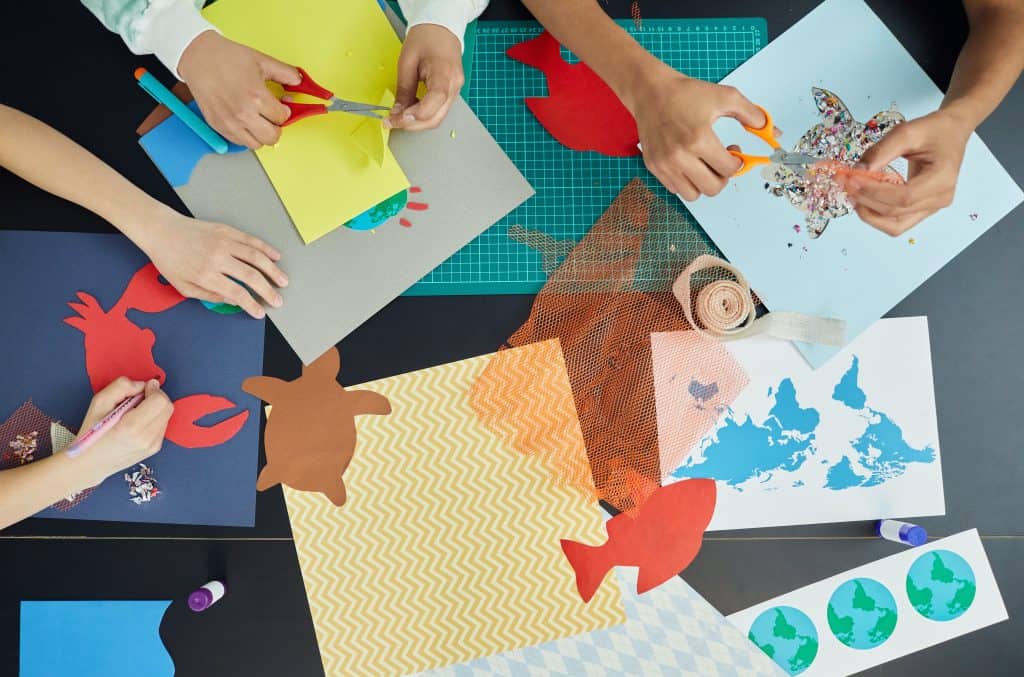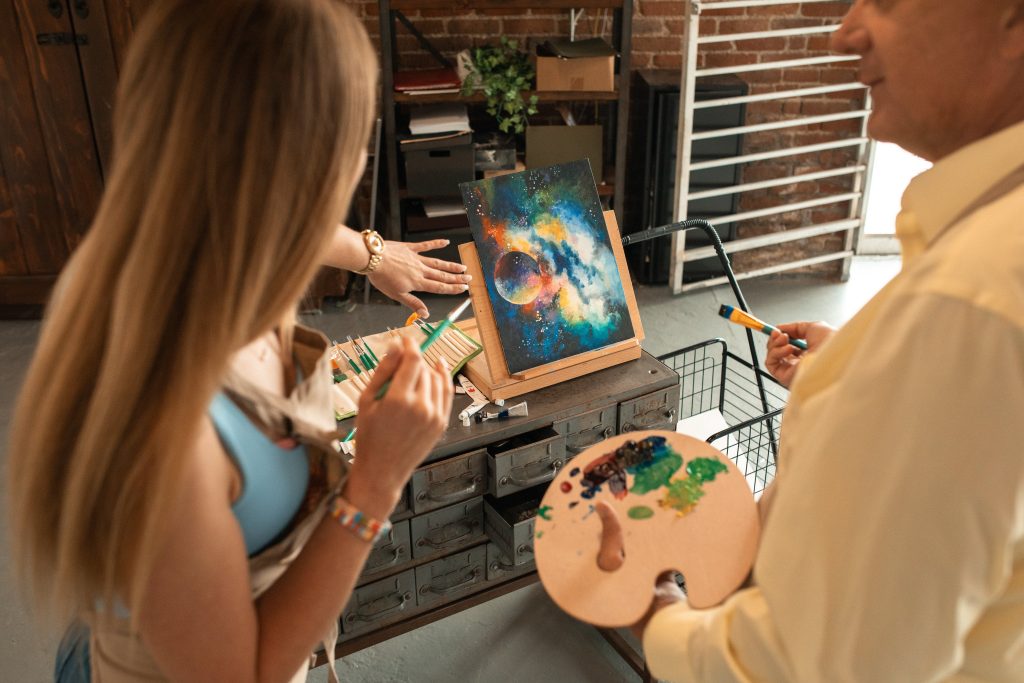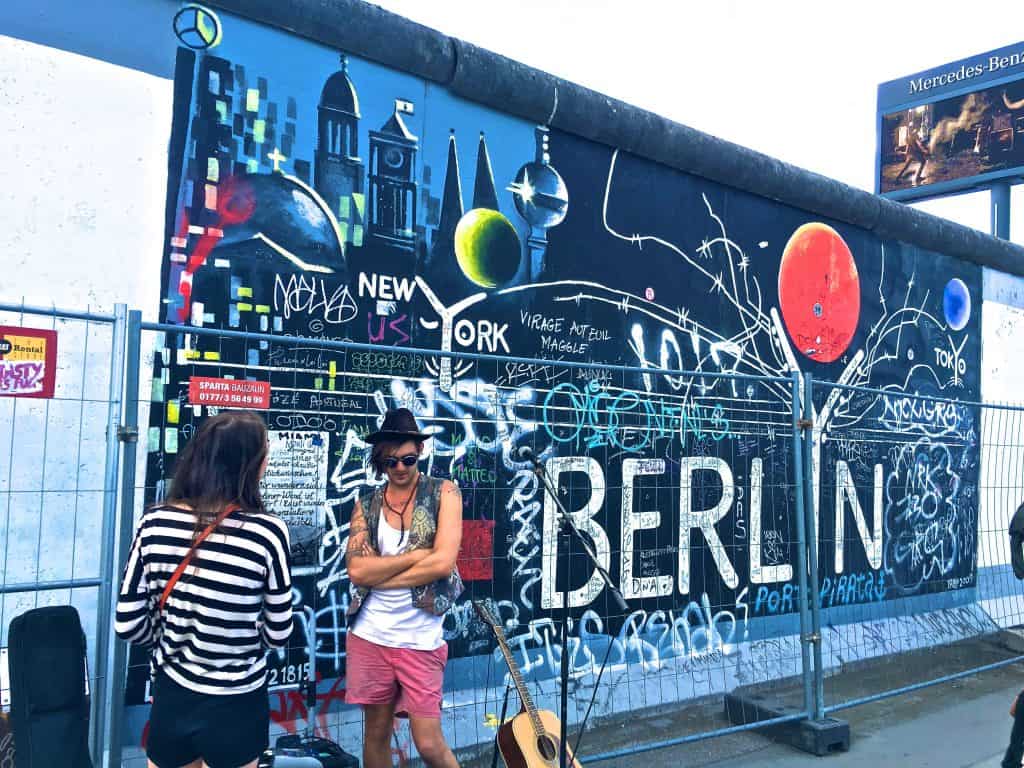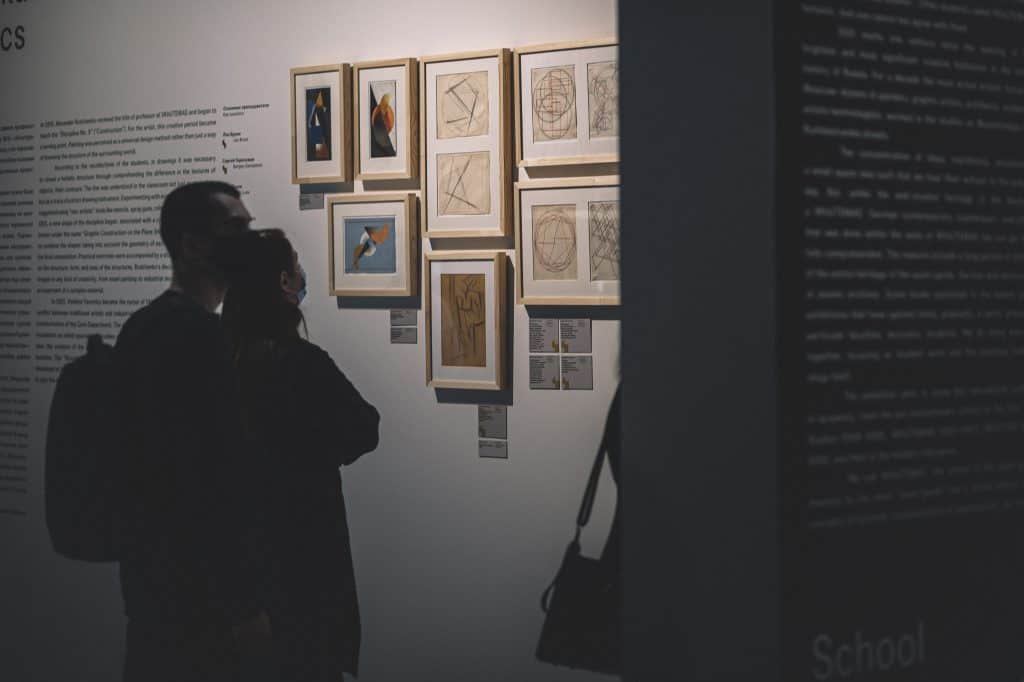
26 Feb Collaborative Art Projects for Community Building
Building strong and connected communities has become progressively more important in today’s digitally linked society. Community building becomes increasingly important as people work to break down barriers and make sincere connections. In this quest, collaborative art projects have become an invaluable tool, providing a platform for the development of creativity and the reinforcement of community relationships. These projects provide more than just an outlet for artistic expression; they serve as catalysts for unity and shared purpose. By inviting collaboration and participation, collaborative art initiatives nurture inclusivity and empowerment, allowing individuals to contribute meaningfully to a collective vision. In essence, they embody a journey of exploration and connection, standing as symbols of resilience and innovation in the modern landscape of community building.
Exploring the Power of Collaboration

Photo by Vanessa Loring
Collaborative art projects serve as vibrant platforms that not only encourage communication and interaction but also facilitate shared experiences among participants. Through the dissolution of barriers, these initiatives cultivate a profound sense of unity, enabling community members to express themselves authentically and without inhibition. As individuals contribute their time and effort towards a collective endeavor, a palpable atmosphere of shared ownership and pride ensues, bolstering a sense of belonging and cohesion within the group. Moreover, these projects serve as vehicles for individual creativity to flourish within the context of a larger narrative, thereby promoting civic engagement and responsibility. Participants are empowered to contribute their unique perspectives and talents, fostering a rich tapestry of expression that reflects the diversity and dynamism of the community at large. In essence, collaborative art projects not only produce visually stunning creations but also serve as catalysts for social cohesion, personal growth, and communal empowerment.
Examples of Collaborative Art Projects

Photo by RDNE Stock project
Large-scale projects
Large-scale projects can profoundly impact communities by fostering a sense of belonging and pride. Public murals, for instance, serve as vivid testaments to local history or culture, adorning prominent walls with stories and images that resonate with residents and visitors alike. Similarly, community gardens transcend mere green spaces by transforming into living art installations, where nature and creativity intertwine to reflect the community’s spirit. Collaborative sculptures further enrich public spaces, inviting communal participation in the creation of tangible symbols of shared identity and vision.
Smaller-scale projects
On a smaller scale, community engagement takes on intimate dimensions through various artistic endeavors. Community-painted benches, for example, marry functionality with aesthetic appeal, as ordinary seating becomes canvases for local artists to showcase their talents, enhancing the ambiance of public areas. Yarn bombing, another grassroots movement, injects streetscapes with bursts of color and whimsy, as knitted or crocheted creations adorn street furniture and trees, sparking joy and conversation among passersby. Group storytelling ventures, facilitated by mediums like painted tiles or sidewalk chalk, weave narratives into the urban fabric, transforming thoroughfares into interactive story pathways where voices from the community converge and resonate.
Digital collaborations
Collaboration in the digital sphere is not limited by physical borders, which increases the impact and reach of artistic activities. Online photo projects allow inhabitants to capture and share moments that characterize their common experiences and goals, providing windows into the collective soul of a community. Together, a variety of contributors’ imaginations and creative energies come together to produce visually breathtaking masterpieces known as collaborative digital murals, which challenge the conventions of traditional art genres. Shared blog platforms function as digital spaces where personal narratives and contemplations converge, creating a diverse array of viewpoints that together influence the story of communal identity and adaptability. Communities communicate, celebrate diversity, and collaboratively construct spaces that embody their common goals and values through these many forms of expression.

Photo by XU CHEN
Effects of Collaborative Art Initiatives
Collaborative art projects wield a transformative power that extends far beyond the canvas or the brushstroke. Take, for instance, the vibrant public murals adorning neighborhoods once forgotten, now pulsating with life and renewed energy. These murals not only infuse color into the urban landscape but also serve as a rallying point for community cohesion and pride. Similarly, the humble community-painted benches dotting parks and gathering spaces subtly encourage social interactions, sparking conversations and forging connections among neighbors. Yet, the impact of these endeavors transcends mere aesthetics; it resonates deeply within the fabric of society. Through interviews with participants and organizers, poignant narratives emerge, unveiling the profound personal experiences and communal bonds fostered by these collaborative ventures. Stories abound of individuals finding solace and solidarity in shared artistic endeavors, of neighborhoods experiencing a palpable reduction in crime rates as community bonds strengthen, and of public spaces transformed into vibrant arenas of civic engagement and expression. Indeed, collaborative art projects serve as catalysts for positive change, breathing new life into communities, fostering empathy, and inspiring collective action towards a brighter, more interconnected future.
Tips for Organizing Successful Collaborative Art Projects
Identify a Theme
Selecting a theme or purpose that deeply resonates with the community’s identity is foundational to the success of any project. By aligning the initiative with something that reflects the values, interests, or aspirations of the community, it becomes more engaging and meaningful to participants. Whether it’s promoting sustainability, advocating for diversity, or fostering creativity, a well-chosen theme serves as a unifying force that energizes and mobilizes individuals towards a common goal.
Accessible Mediums
It’s necessary to provide platforms and formats that accommodate people with different skill levels and experiences if you want to be inclusive. Regardless of technical proficiency, this entails choosing communication channels, methods, and resources that are simple to use and comprehend. The project’s embrace of accessibility guarantees that all individuals, irrespective of their skill level or acquaintance with the topic, may participate and add to the community, so promoting a sense of empowerment and inclusion.
Inclusive Environment
Creating a welcoming and inclusive environment lies at the heart of fostering a sense of belonging and encouraging broad participation. This entails not only promoting diversity in terms of race, gender, age, and socioeconomic status but also embracing diverse perspectives, experiences, and ideas. By actively cultivating an atmosphere of respect, empathy, and openness, the project cultivates a safe space where individuals feel valued, heard, and encouraged to share their insights and opinions without fear of judgment or exclusion.
Celebration of Contributions
Recognizing and celebrating individual contributions is essential for nurturing a culture of appreciation, collaboration, and collective achievement. By acknowledging the efforts and accomplishments of participants, the project reinforces a sense of camaraderie and mutual support within the community. Whether through public recognition, awards, or simple gestures of gratitude, highlighting the diverse talents and contributions of individuals helps reinforce their sense of agency and ownership, inspiring continued engagement and commitment to the project’s success.
Consider Ongoing Maintenance
Planning for the ongoing maintenance and potential future iterations of the project is vital for its long-term sustainability and relevance. This involves establishing clear protocols, systems, and resources for managing updates, addressing feedback, and adapting to evolving needs and circumstances. By proactively addressing issues of scalability, maintenance, and scalability from the outset, the project lays the groundwork for continued growth, innovation, and impact over time. Additionally, by involving the community in the planning and decision-making process, the project ensures that it remains responsive to the changing needs and aspirations of its members, fostering a sense of ownership and investment in its long-term success.

Photo by Egor Myznik
Conclusion
Collaborative art projects stand as powerful instruments for community building, fostering connections, and nurturing shared experiences. As explored, these initiatives transcend mere creativity; they cultivate unity, empower individuals, and spark meaningful dialogues within neighborhoods and beyond. Whether through large-scale murals celebrating local heritage or digital collaborations capturing the essence of community life, the impact of collaborative art resonates deeply, manifesting in revitalized public spaces, heightened civic engagement, and enriched social fabrics. To harness the full potential of such projects, organizers should prioritize inclusivity, accessibility, and ongoing maintenance, ensuring that these endeavors continue to serve as catalysts for positive change and collective expression in the ever-evolving landscape of community dynamics. Through collaborative art, communities not only create beauty but also cultivate resilience, empathy, and enduring bonds that strengthen the fabric of society.
Key Takeaways
- Communication and Interaction: Break down barriers and create shared experiences.
- Shared Ownership and Pride: Foster a sense of belonging and investment in the community.
- Creative Expression and Empowerment: Showcase talents and contribute to something larger.
- Civic Engagement and Responsibility: Take ownership of public spaces and raise awareness.
FAQs
How can I start a collaborative art project in my community?
Starting a collaborative art project in your community begins with a thoughtful approach to engagement and participation. It’s crucial to identify a theme or purpose that resonates deeply with the community’s identity and values, fostering a sense of belonging and shared ownership. By choosing accessible mediums and creating an inclusive environment, you can encourage diverse participation and ensure that everyone feels welcome to contribute their unique perspective and talents. Celebrating individual contributions and showcasing the collective artwork in public spaces helps reinforce the project’s impact and promotes community pride and cohesion.
What are some examples of digital collaborative art projects?
Digital collaborative art projects offer innovative ways for artists to connect and create together across digital platforms. Examples include online photo projects where participants contribute images based on a theme, collaborative digital murals created remotely using digital tools, and shared blog platforms for artists to share their work and ideas. These projects transcend geographical boundaries and foster collaboration among artists from diverse backgrounds, providing opportunities for creative expression and engagement in virtual spaces.
What outcomes can I expect from organizing a collaborative art project?
Organizing a collaborative art project can lead to a range of positive outcomes for both individuals and communities. Such projects have the potential to reduce crime rates by fostering community pride and engagement, leading to increased vigilance and social cohesion. They can also promote civic engagement by raising awareness of local issues and providing a platform for collective action and expression. Additionally, collaborative art projects can enhance public spaces, revitalizing neglected areas and creating vibrant hubs of creativity and community interaction. Through specific case studies, the article illustrates how collaborative art projects have contributed to social change, civic engagement, and the overall quality of life in various communities.
Immerse yourself in the boundless possibilities of “Virtual Reality (VR) in Art Exhibition Tours,” revolutionizing the way audiences engage with and experience art in the digital age.

